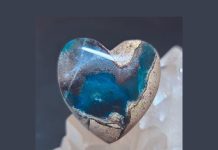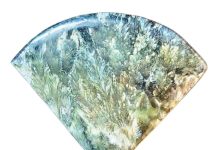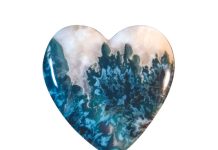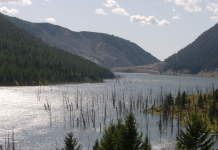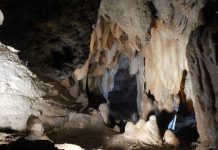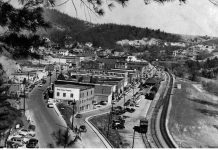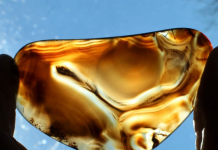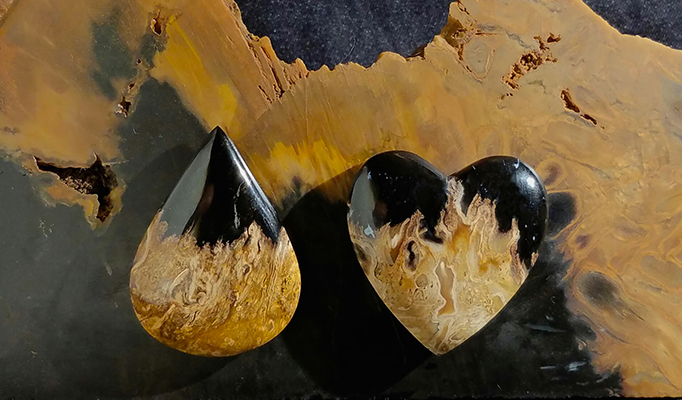
Story and Photo by Russ Kaniuth
Indonesian fossil palm root is a stone of such beauty, with its high-contrasting earthy tones against a stark black sky. Many lapidaries who cab this material try to capture what is seen most, a fire rising up in the midnight sky.
This material is not very common in the marketplace; it seems to be rather scarce, so when you do find some at a rock show or posted for sale online, my suggestion is to pick it up as quickly as possible! If you want to see some really fine examples of cabochons made from this material, go look at cabochon artist Lexx Stones’ website, www.lexxstones.com.
Making cabochons with this material is great for lapidaries of all levels. It has a hardness of approximately Mohs 6, it is easy to design with, and it cuts and shapes rather nicely, without much fuss. The only real pitfall with this material is that the very outer edge can be porous and softer than the rest of the piece, so a suggestion would be to start your designs at least 3 mm and up to 5 mm in from the edge to ensure that you will get a clean cut without pitted or cracked-off edges.
Cutting slabs from rough material may be a little tricky. It’s almost always in very odd shapes, so wedges and caution should be used when locking down the stock into your saw. Make sure it’s well secured in the vice by grabbing hold of it and yanking in several directions to find out if it will budge.
This is the type of material that you really don’t want to cut very thick, so I set my cuts to 5.5 mm up to 6 mm. One reason is to preserve as much of it as I can to obtain the most slabs I can get from the rough. The other reason is that I may want to consider forming a slightly lower dome than usual.
When cabbing Indonesian fossil palm root, remember that it’s a natural material and the patterns will change drastically within a distance of 1 mm. When deciding on where to lay out your preform, always keep in mind that the pattern you see may not be what you end up with. It will most definitely change as you start doming the top of your cab. For those who like to cab flat tops, this obviously won’t be an issue—what you see is what you will get!
Once your preforms are ready to start grinding your shape and doming the top, dry your cab well and inspect it for any pits or cracked edges, most of which will be within the golden-brown areas. You may need to stabilize these areas or adjust your pattern around them. I usually spend a little extra time smoothing the final shape on the 220 grit steel wheel. Doing this leaves less chance of undercutting in the lighter-colored areas that may be slightly softer than the black regions. After that, the cabbing process should be a breeze.
Most lapidaries usually stop at 14,000 grit, which still leaves this material looking extremely nice; however, if you can go to 50,000, it will surely leave you with a gorgeous mirror finish. Indonesian fossil palm root shines up as nicely as many jaspers would, and in most cases, no extra polishing compounds will be needed to obtain a really nice cab. If you wish to use compounds such as cerium oxide, be sure to fill any pits—especially if they are in the black areas—ahead of time, or the compound with fill that void and create an eyesore.


